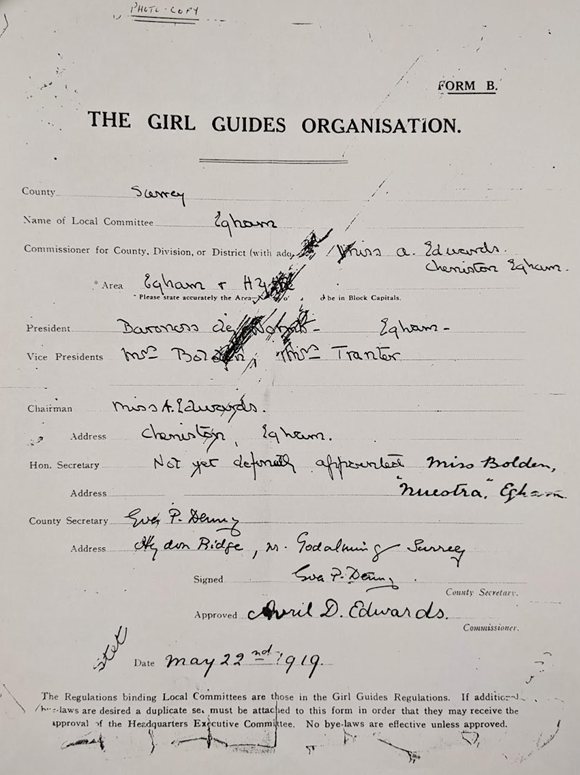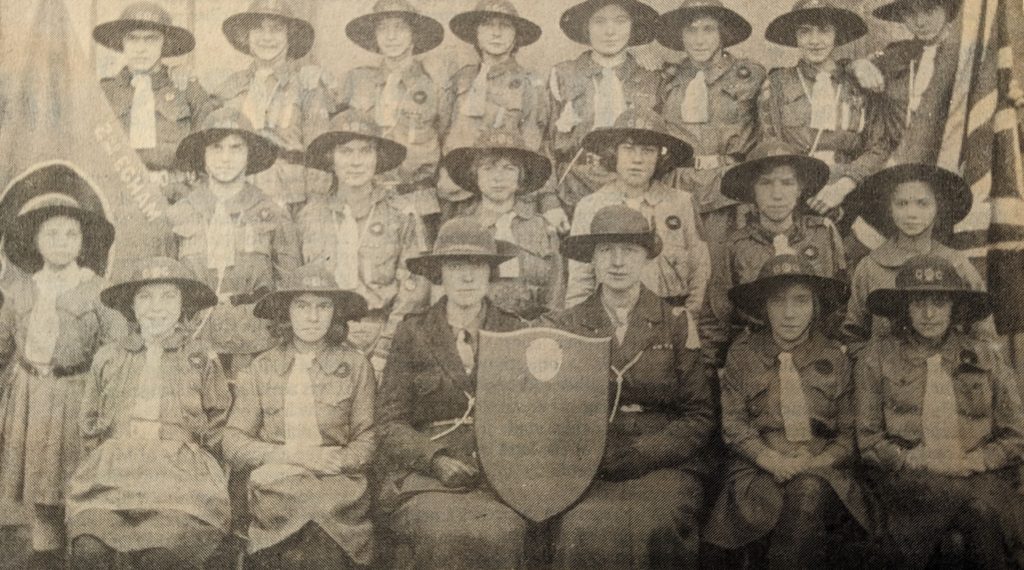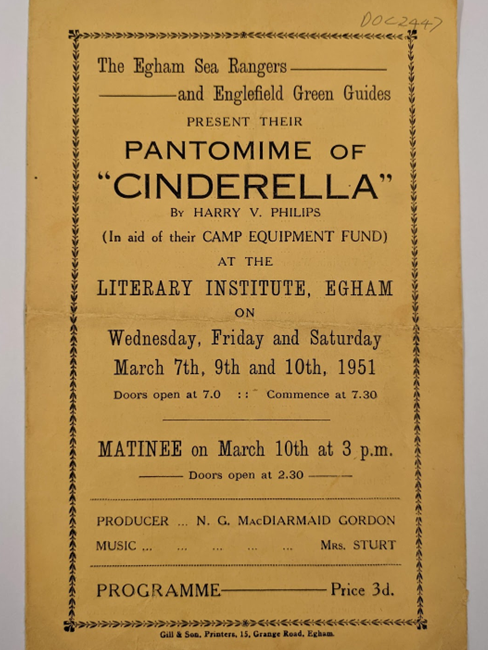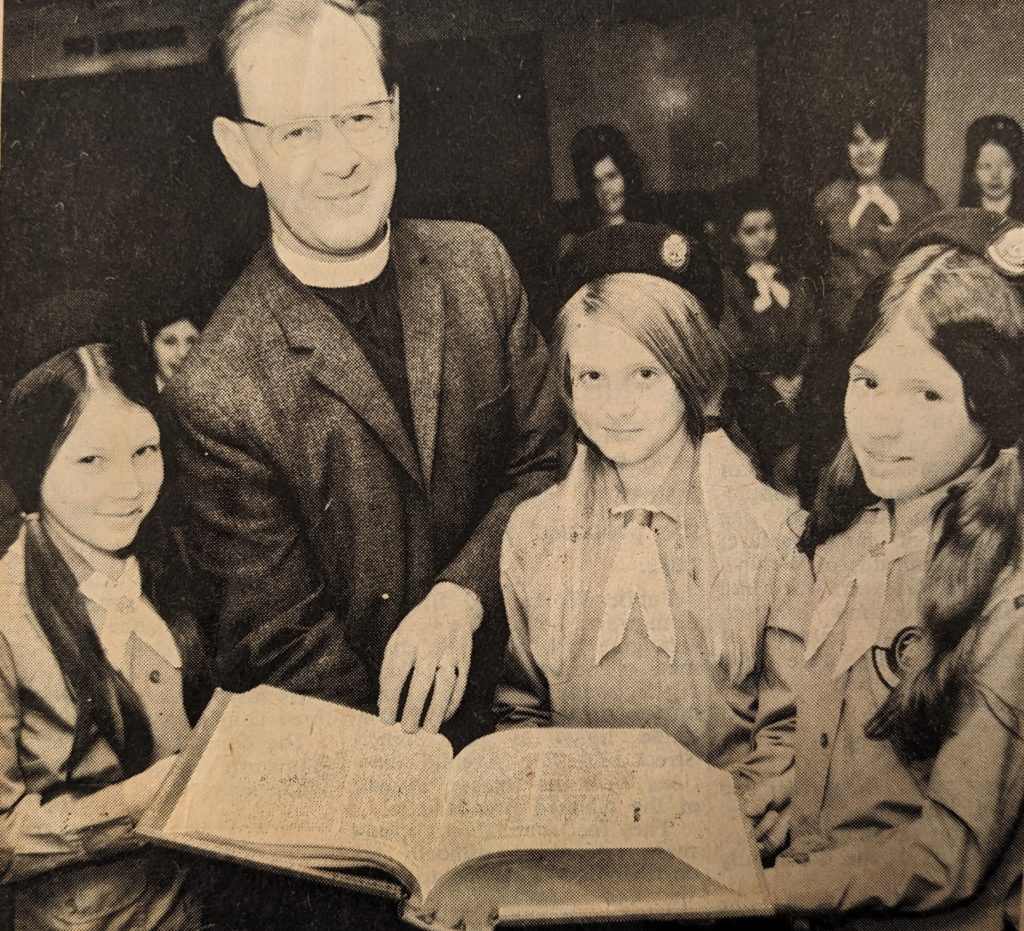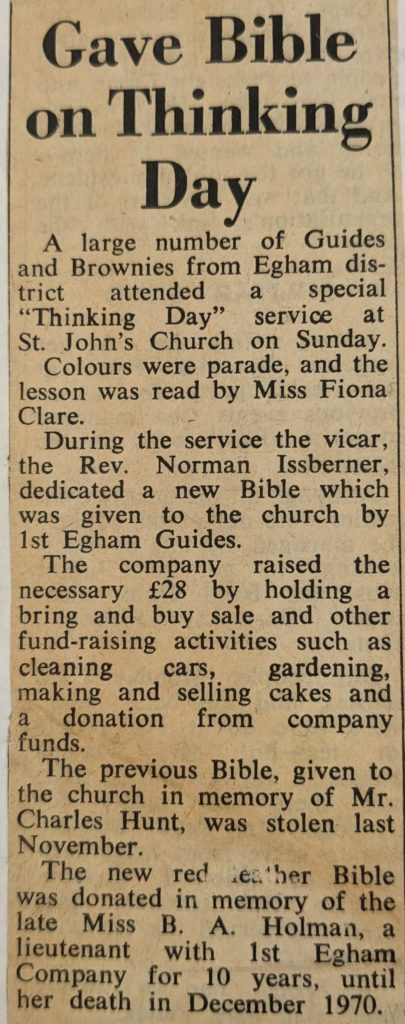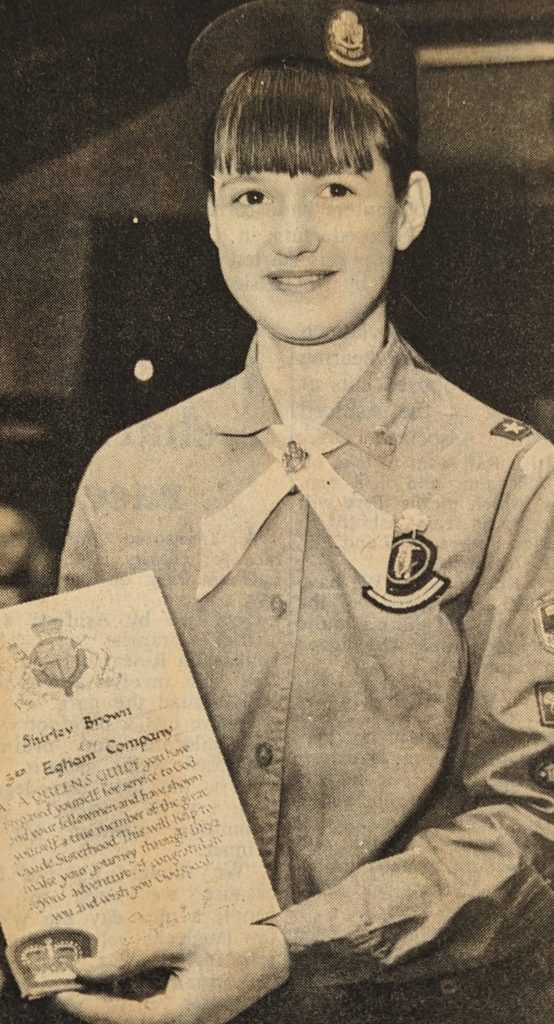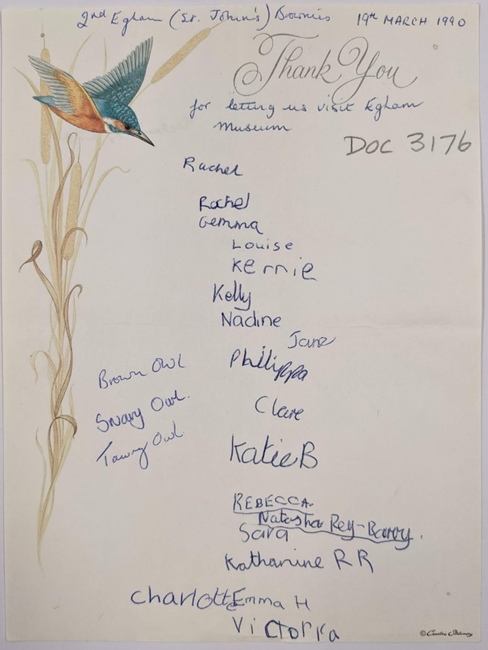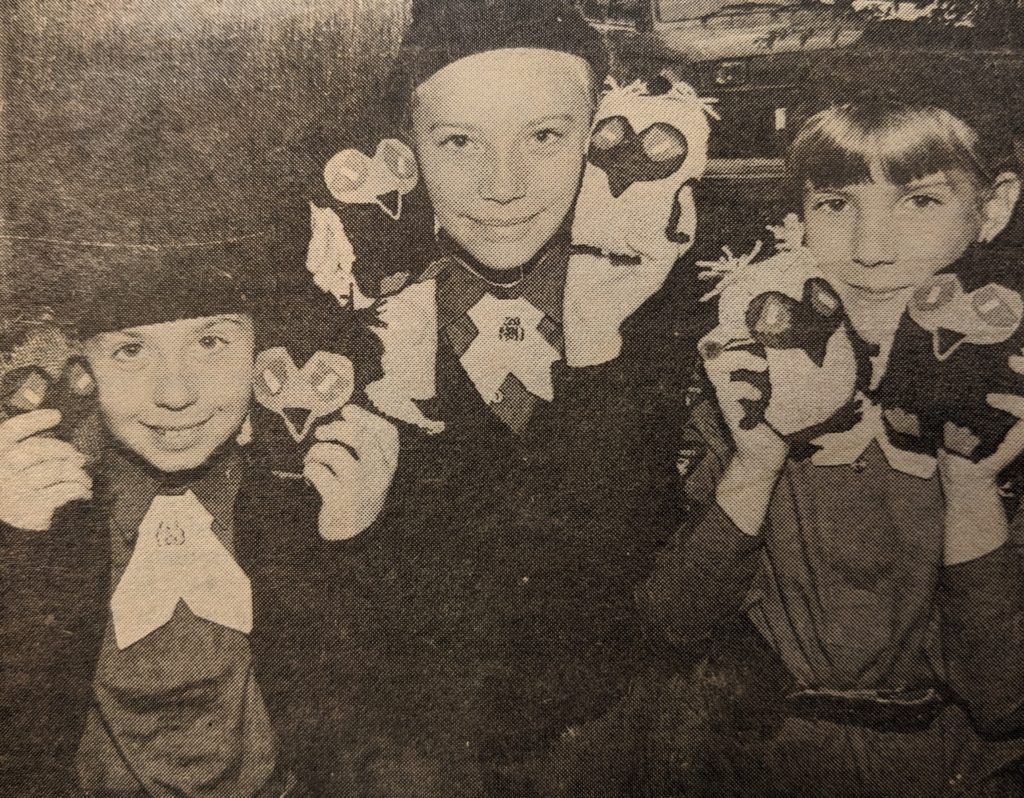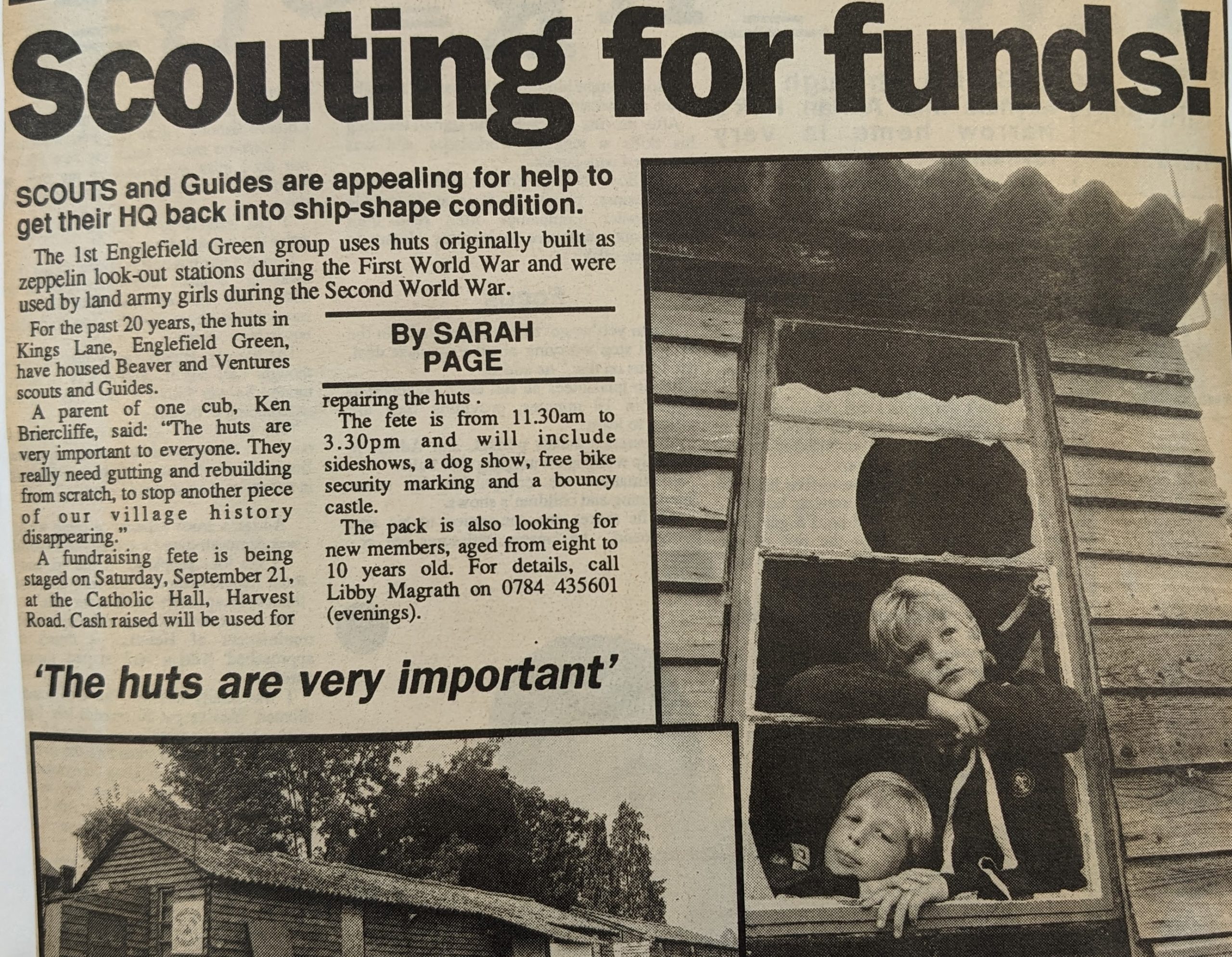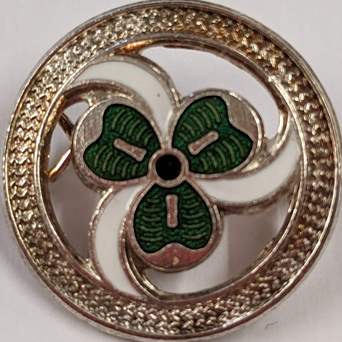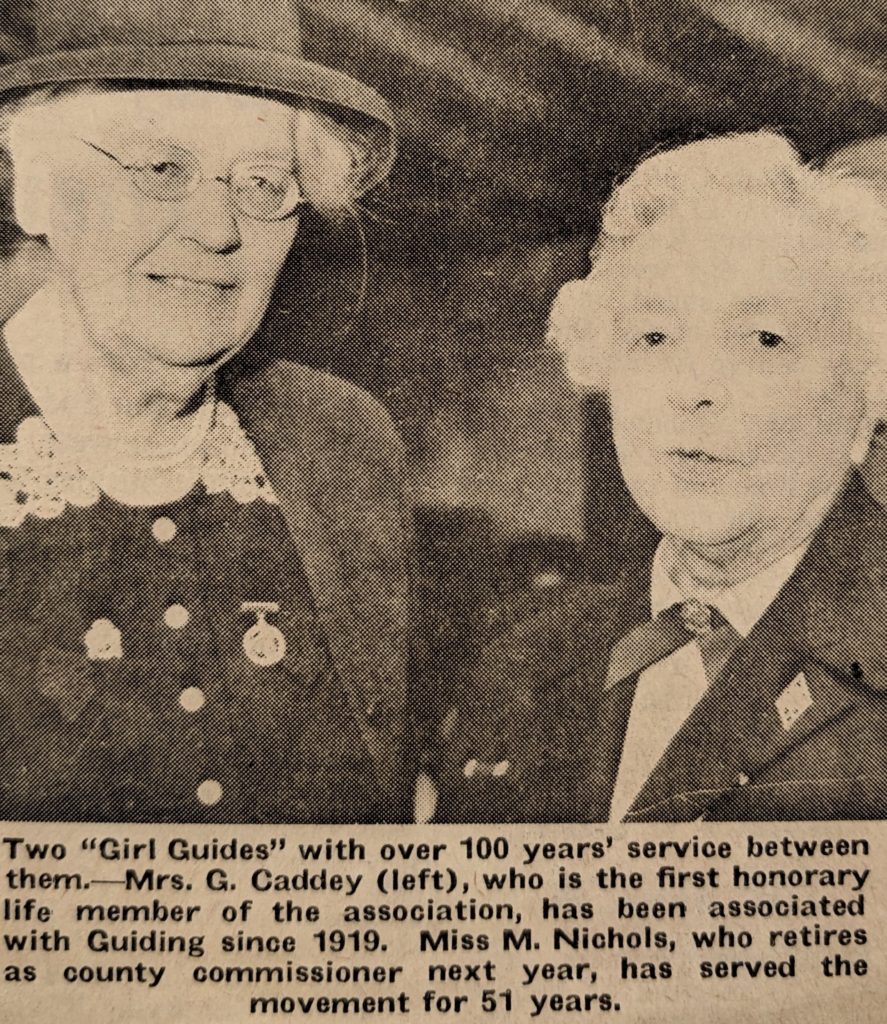‘Something for the girls’: Searching for Brownies and Girl Guides in the Egham Museum Archive
Article by Hannah
It is ‘a rather cold and misty day’ on 4 September 1909 and 11,000 Boy Scouts are descending on Crystal Palace for a rally, led by their Chief Scout Robert Baden-Powell. What the Scouts don’t know is that hidden among them, disguised in borrowed Scout uniforms, are six teenage girls. They confront Baden-Powell, among the whistles and catcalls, and demand ‘something for the girls’.
The year is 1909. Some women over the age of thirty won’t get the vote in Britain for another nine years. There won’t be a woman sitting as an MP for another ten years. All women, over the age of twenty-one, won’t get the right to vote for another nineteen years. And yet, six girls entered a male-only space and demanded that they were entitled to their own organization. Girl-guiding, since the start, has been ‘a feminist and campaigning group’.
The first trace of Girlguiding in the Egham Museum Archive comes from 22 May 1919.
The Egham ‘Girl Guides Organisation’ committee was founded, and Miss A. Edwards acted as both Commissioner and Chairman. This was most probably Avril Edwards of Cheniston, Egham. She was 20 years old when she became Commissioner.
During the interwar years, Egham had built up a sizable Guiding unit. The 2nd Egham Guides were photographed in this period.
Then we jump forwards to the 1940’s when a group of Guides posed for a photograph. These Guides may have taken part in the 1941 Cotton Reel Appeal when the Royal Air Force requested 11,000 cotton reels. Unknown to Guides at the time, these reels were then used to send messages and money to soldiers by MI9. During the Second World War, Girl Guides raised money for the war effort, knitted clothes for soldiers, cleaned houses for evacuees and took in refugees.
As many girls left school at the age of fourteen, Guides acted as an alternative route to continue their education. These Guides were trained in first aid, they were ‘electricians’, ‘mechanics’ and ‘signallers’. A lot had changed since 1909, when Guides were told not to run or lift their arms in an unlady-like way. Now they were ‘learning to swim’, to ‘cycle’ and even to ‘shoot’.
A key part of GirlGuiding is the camps. In 1951, on a Wednesday, Friday and Saturday in March, the Englefield Green Guides, along with the Egham Sea Rangers, put on a Pantomime of Cinderella to raise money for their Camp Equipment Fund. They held the Pantomime at the Egham Literary Institute, which is where the museum is located today! Their Pantomime featured Baroness Hardup, Syrup and Figs (the Ugly Sisters), Lady Virginia Water, Fairy Englefield, Elves, Bears, and a Nautical Chorus. We also have a photo of the 1st Virginia Water Brownies in 1950.

In 1960, Girl Guides celebrated its 50th anniversary and in 1968 a new programme of activities was introduced. In 1970, they reached their diamond jubilee. On 22 February 1970, the Annual Thinking Day Service was held. This service was framed through Christian beliefs and functioned as a celebration of both Robert Baden-Powell and his wife, Olave who was the World Chief Guide. They shared their birthday on 22 February.
We also have a bright yellow and brown Pennant flag from the late 1960s that belonged to the 2nd Virginia Water Brownie Division. This flag would have been placed on its pole and used at special occasions – such as Thinking Day.

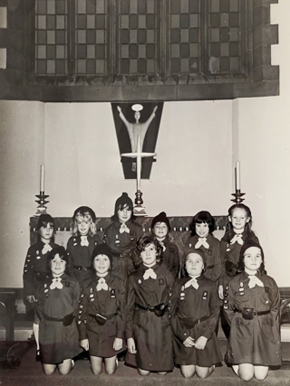
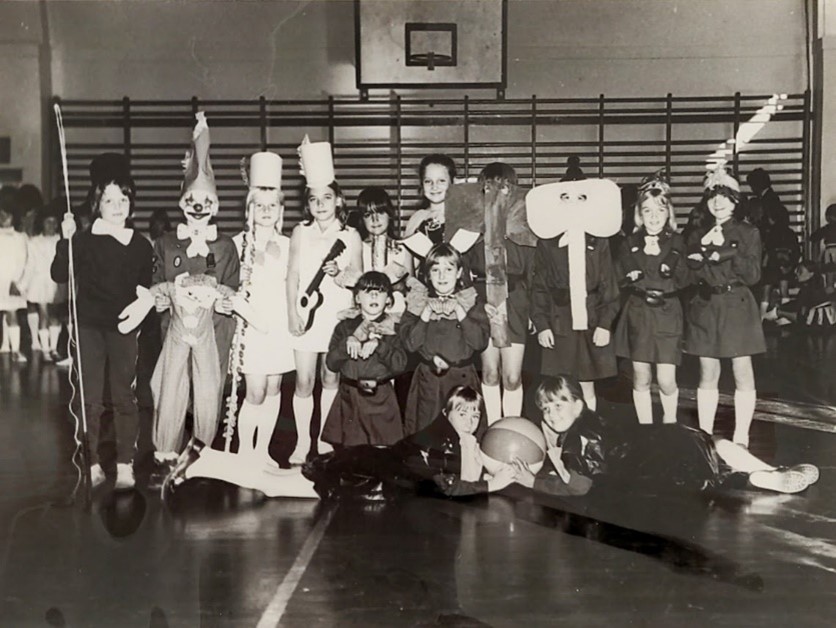
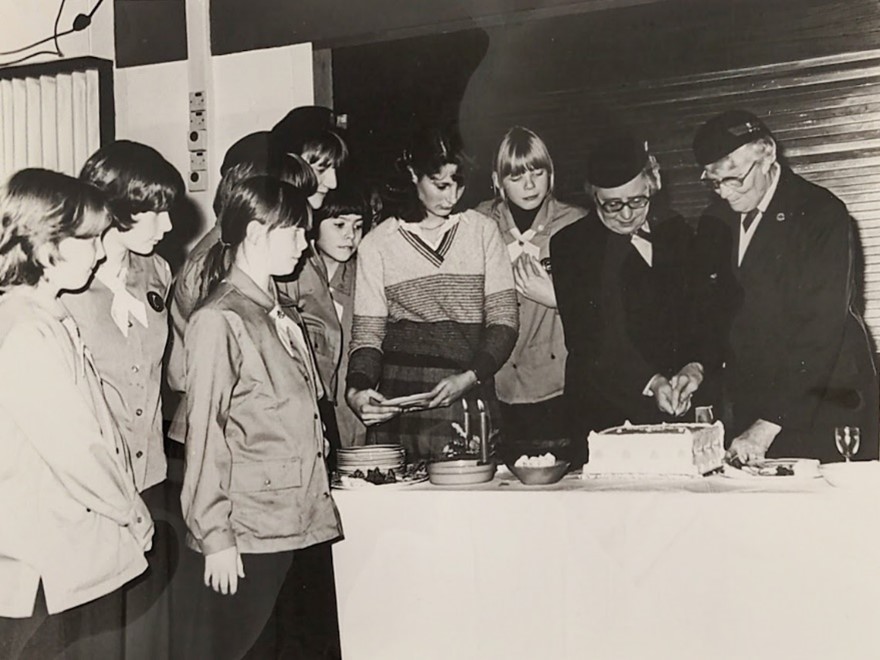
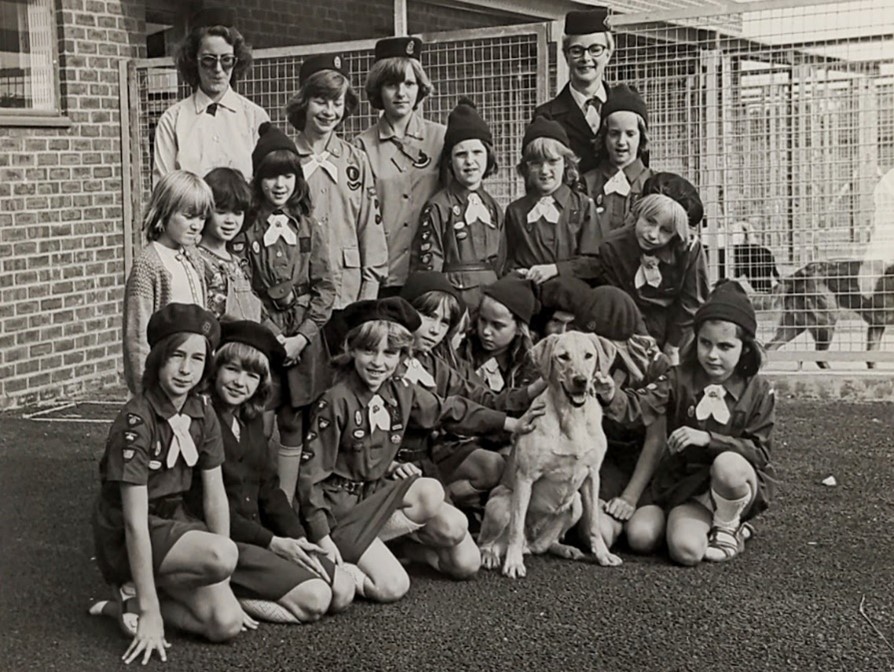

The Queen’s Guide Award is the highest award in guiding, and one Guide achieved this goal in 1972.
In March 1990, 2nd Egham (St John’s) Brownies visited the Museum and wrote a Thank You note. 18 Brownies signed this note and their three ‘Owl’ leaders.
A year later they were photographed for the newspaper, showing off the felt owls that they had made.
However, by 1991, the local Scout hut was in disrepair and an appeal was launched to raise funds for it.
The Museum also holds a Brownie uniform from the late 1980s. This type of uniform was worn between 1967 and 1990. The badge on this uniform indicates that this Brownie was part of the ‘Imp Six’ group. She has also been awarded the Conservation badge, the Road Journey badge, and the Photographer badge.
In the Museum we also have a collection of badges, and one really stands out. This is a ‘Thanks’ Badge. According to the original 1917 Guides handbook:
“The “Thanks” badge may be given to anyone to whom a Girl Scout owes gratitude. Every Girl Scout throughout the whole world when she sees the thanks badge, recognizes that the person who wears it is a friend and it is her duty to salute and ask if she can be of service to the wearer of the badge.“
We also have a promise badge that is styled on the 1920s version, but was probably made between 1968 and 1990.
In 1910, the promise went:
On my honour, I promise that I will do my best: To do my duty to God and the King (Or God and my country); To help other people at all times; To obey the Guide Law
In 2013, the promise underwent its most radical change and mentions of God were removed to make the promise more inclusive. Today, following the death of Girlguiding’s patron Queen Elizabeth II, the promise reads:
I promise that I will do my best, to be true to myself and develop my beliefs, to serve the King and my community, to help other people and to keep the Guide Law.
In the Museum’s archive we can catch a glimpse of Girlguiding’s history in Egham from 1919 to the 1990’s. This organization has its roots in feminism, campaigning and making a space for girls in a patriarchal society. Today, Girl Guides continues its campaigning nature and acts as an inspiring force for many young women.
Further Reading:



